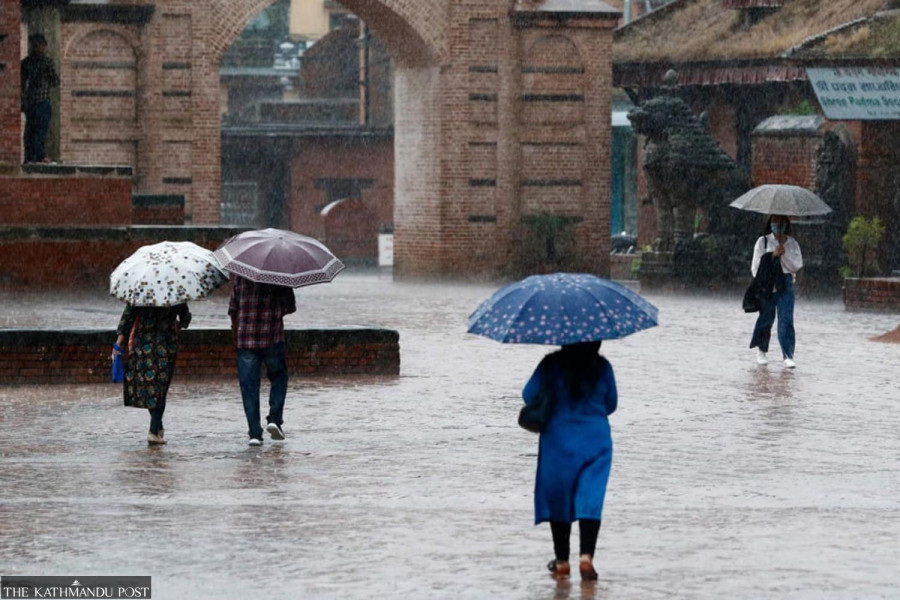Climate & Environment
Rainfall triggered by Bihar pressure system to continue till tomorrow
Nepal’s hill and mountainous districts have witnessed rains over the last two days.
Post Report
Rainfall triggered by a low-pressure system developed in India’s eastern state of Bihar will continue until Saturday, the Meteorological Forecasting Division of the Department of Hydrology and Meteorology said on Thursday.
Officials said a trough is entering the country from eastern Nepal, causing rainfall in many parts of the hilly and mountainous regions.
Along with moisture caused by a low-pressure system developed in Bihar, the local system and western disturbances are also responsible for the ongoing rainfall, said Samir Shrestha, a meteorologist at the division. “People residing in the districts of eastern Tarai got relief from the heat on Thursday as the skies in those areas remained cloudy,” Shrestha said.
Hill and mountain districts, including the Kathmandu Valley, have been witnessing rainfall, strong winds and hailstorm for the past couple of days. The met office said light rainfall or thunder and lightning are likely to occur on Thursday night at a few places in Koshi Province and at one or two places in the hilly regions of Gandaki Province.
On Wednesday, the Kathmandu Valley witnessed 40.5 mm rainfall, the highest in the country. On Thursday the met office recorded 14.2 mm rainfall in the Valley.
The Department of Hydrology and Meteorology has predicted that Nepal is most likely to witness below-average rainfall in the upcoming monsoon season.
The department’s Climate Section, which forecast weather conditions for four months between June 1 and September 30, said that most parts of the country are likely to experience an above-average maximum temperature due to the El Nino conditions, a climatic pattern that generally brings dry weather.
Nepal is one of the world’s most vulnerable countries to the climate crisis and has witnessed extreme weather events over the past decade and a half.
Evidence indicates that the maximum temperature in Nepal is rising at a faster pace (0.056 degrees Celsius per year) than the global average (of 0.03 degrees Celsius per year).
Experts say extreme weather events—excessive rainfall in a short span of time, continuous rain for several days in the post-monsoon period, dry spells and drought, below average precipitation and above-normal temperatures in winter—have become more frequent in Nepal in recent years.




 9.12°C Kathmandu
9.12°C Kathmandu










